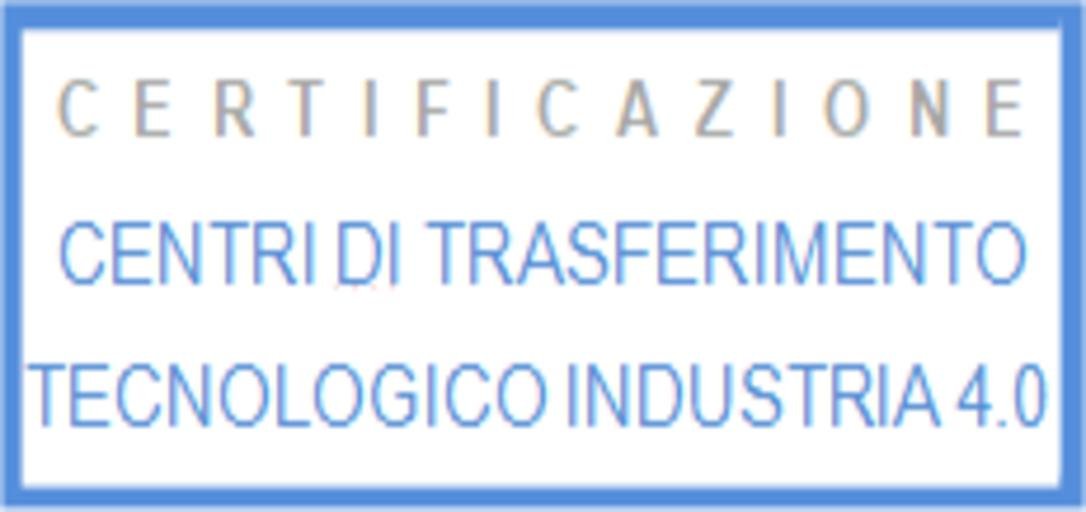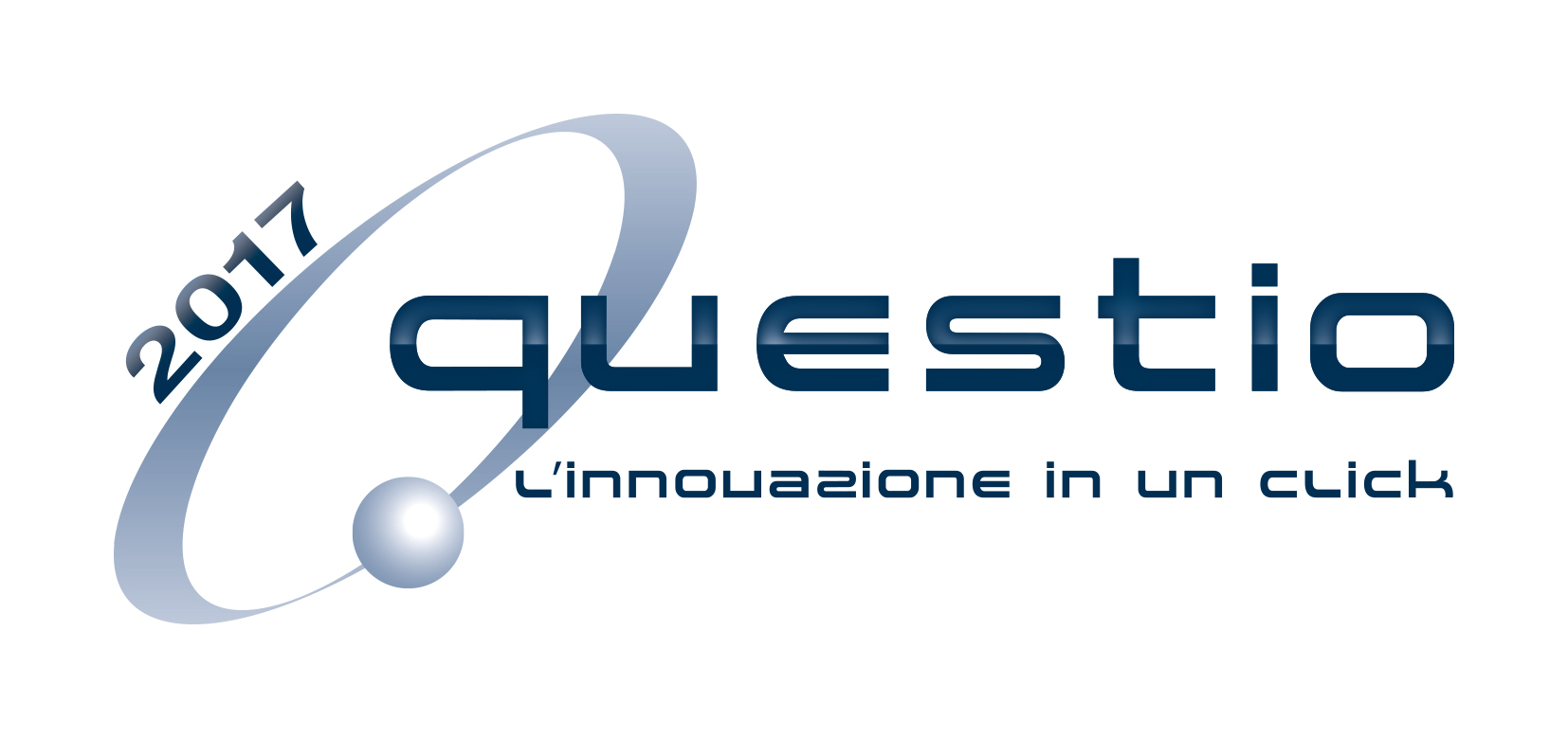Research, Development and Technology Transfer Centre
Social Thingum is a technology transfer centre (CTT) with the task of carrying out training and technological consultancy activities, as well as providing technology transfer services to companies employed in certain economic and industrial sectors, identified by the Ministry of Economic Development.
These are companies and entities that prove to carry out technological projects in sectors such as additive manufacturing, augmented reality, the internet of things, the cloud, cybersecurity and big data analysis.
The certificate is released by Unioncamere, the Italian institution that plays an important role in the process of digitization of companies and, more generally, of modernization of the country through the implementation of projects and the provision of services.
Social Thingum is one of the 28 technology transfer centers in Italy, whose specialization has been recognized in the fields of Industrial Internet, Internet of Things and/or Internet of Machines, Big Data and Analytics, related to the activities of:
- Technological training
- Consulting training on organizational and/or business, technical and - - - industrial models
- Design and planning of technology implementation interventions
- Industry 4.0
- Industrial research and experimental development including prototyping, including virtual prototyping
- Production of technical or documentary material on technologies 4.0
Social Thingum is also a Research, Development and Technology Transfer Centre accredited by the Lombardy Region through Questio.
In this quality, we can help companies to obtain non-reimbursable funding or financial facilities for the implementation of Research and Development (R&D) projects and/or product and/or process innovation.
We aim to assist you in the drafting of the documentation necessary to participate in the call and, above all, in the implementation of the projects themselves. In fact, being Social Thingum also an accredited Research Centre, our costs are expensable within the project.
In particular, we also have seven Innovation Managers accredited by MISE, able to offer a wide variety of services to support innovation projects for companies.
Social Thingum is one of the 100 most innovative artificial intelligence startups in Europe, certified by the European Digital SME Alliance
The European DIGITAL SME Alliance is the largest network of small and medium-sized ICT companies in Europe, representing more than 45,000 companies in total. It represents the national SME associations of the EU member states at the Joint Research Center of the European Commission, with the aim of putting the digital SME at the heart of the EU agenda. The European DIGITAL SME Alliance:
- Participates in and proposes EU-funded projects;
- Organizes conferences and seminars;
- produces newsletters and studies;
- Conducts research and development on ICT-related areas; - Monitors EU ICT policies and regulations and notifies its members.
Scientific Publications
Autori: Luca Marconi, Ricardo Anibal Matamoros Aragon, Italo Zoppis, Sara Manzoni, Giancarlo Mauri, Francesco Epifania
Tag: Explainable AI, Personalized learning, WhoTeach, Social recommendations, Graph attention networks
Learning and training processes are starting to be affected by the diffusion of Artificial Intelligence (AI) techniques and methods. AI can be variously exploited for supporting education, though especially deep learning (DL) models are normally suffering from some degree of opacity and lack of interpretability. Explainable AI (XAI) is aimed at creating a set of new AI techniques able to improve their output or decisions with more transparency and interpretability. In the educational field it could be particularly significant and challenging to understand the reasons behind models outcomes, especially when it comes to suggestions to create, manage or evaluate courses or didactic resources. Deep attentional mechanisms proved to be particularly effective for identifying relevant communities and relationships in any given input network that can be exploited with the aim of improving useful information to interpret the suggested decision process. In this paper we provide the first stages of our ongoing research project, aimed at significantly empowering the recommender system of the educational platform “WhoTeach” by means of explainability, to help teachers or experts to create and manage high-quality courses for personalized learning. The presented model is actually our first tentative to start to include explainability in the system. As shown, the model has strong potentialities to provide relevant recommendations. Moreover, it allows the possibility to implement effective techniques to completely reach explainability.
Autori: Marconi, L., Matamoros Aragon, R., Zoppis, I., Manzoni, S., Mauri, G., & Epifania, F.
Tag: Graph Attention Networks; Social Networks; Social Recommendations; WhoTeach;
Learning and training processes are starting to be affected by the diffusion of Artificial Intelligence (AI) techniques and methods. AI can be variously exploited for supporting education, though especially deep learning (DL) models are normally suffering from some degree of opacity and lack of interpretability. Explainable AI (XAI) is aimed at creating a set of new AI techniques able to improve their output or decisions with more transparency and interpretability. Deep attentional mechanisms proved to be particularly effective for identifying relevant communities and relationships in any given input network that can be exploited with the aim of improving useful information to interpret the suggested decision process. In this paper we provide the first stages of our ongoing research project, aimed at significantly empowering the recommender system of the educational platform”WhoTeach” by means of explainability, to help teachers or experts to create and manage high-quality courses for personalized learning. The presented model is actually our first tentative to start to include explainability in the system. As shown, the model has strong potentialities to provide relevant recommendations. Moreover, it allows the possibility to implement effective techniques to completely reach explainability.
Autori: Luca Marconi, Ricardo Anibal Matamoros Aragon, Serena Fossati, Italo Zoppis, Rossana Actis Grosso, Sara Manzoni, Giancarlo Mauri,and Francesco Epifania
Tag: Social Networks, WhoTeach, Social Recommendations, Graph Attention Networks
Nowadays, learning and training processes are beginning to be affected by the diffusion of Artificial Intelligence (AI) techniques and methods. Despite its potentialities, AI and in particular deep learning (DL) models are normally suffering from some degree of opacity and lack of interpretability. Explainable AI (XAI) is aimed at creating a set of new AI techniques able to improve their output or decisions with more transparency and interpretability. Among these techniques, deep attentional mechanisms provide the possibility to improve the performances of the output of the models and especially they allow to explain the reason why a specific output is given. In this paper we describe the current stage of explainability for a collaborative-filtering recommender system (RS) of the “WhoTeach” educational platform, which is aimed at designing of new didactic programs and courses, particularly by the means of the results of an experimentation that has been performed on a selected set of users, by means of the cooperative evaluation approach. A relevant result of the experimentation shows the need for improving explainability and suggested a development direction towards attentional mechanisms for WhoTeach functionalities that are devoted to suggest educational resources according to user needs and profile. This type of models allows to justify the chosen recommendations provided by the model by means of attention weights, which have also been statistically tested.
Autori: Italo Zoppis, Sara Manzoni, Giancarlo Mauri, Ricardo Aragon, Luca Marconi and Francesco Epifania
Tag: Social Networks, WhoTeach, Social Recommendations, Graph Attention Networks
Recent studies in the context of machine learning have shown the effectiveness of deep attentional mechanisms for identifying important communities and relationships within a given input network. These studies can be effectively applied in those contexts where capturing specific dependencies, while downloading useless content, is essential to take decisions and provide accurate inference. This is the case, for example, of current recommender systems that exploit social information as a clever source of recommendations and / or explanations. In this paper we extend the social engine of our educational platform “WhoTeach” to leverage social information for educational services. In particular, we report our work in progress for providing “WhoTeach” with an attentional-based recommander system oriented to the design of programmes and courses for new teachers.
Autori: Epifania F, Marconi L, Mauri G, Manzoni S, Dondi R, Zoppis I
Tag: Recommender Systems
Recommender Systems have became extremely appealing for all technology enhanced learning researches aimed to design, develop and test technical innovations which support and enhance learning and teaching practices of both individuals and organizations. In this scenario a new emerging paradigm of explainable Recommander Systems leverages social friend information to provide (social) explanations in order to supply users with his/her friends’ public interests as explained recommendation. In this paper we introduce our educational platform called “WhoTeach”, an innovative and original system to integrate knowledge discovery, social networks analysis, and educational services. In particular, we report here our work in progress for providing “WhoTeach” environment with optimized Social Explainable Recommandations oriented to design new teachers’ programmes and courses.
Autori: Epifania F, Marconi L, Mauri G, Manzoni S, Dondi R, Zoppis I
Tag: Recommender Systems
Recommender Systems have became extremely appealing for all technology enhanced learning researches aimed to design, develop and test technical innovations which support and enhance learning and teaching practices of both individuals and organizations. In this scenario a new emerging paradigm of explainable Recommander Systems leverages social friend information to provide (social) explanations in order to supply users with his/her friends’ public interests as explained recommendation. In this paper we introduce our educational platform called “WhoTeach”, an innovative and original system to integrate knowledge discovery, social networks analysis, and educational services. In particular, we report here our work in progress for providing “WhoTeach” environment with optimized Social Explainable Recommandations oriented to design new teachers’ programmes and courses.
Autori: Andri PERL, Sebastiaan BONGERS, Simone Bassis, Bruno Apolloni, Swiss Reinsurance Co Ltd
Tag: /
An electronic, real-time system performs maneuver recognition of vehicles based on dynamically measured telematics data, particularly the sensory data of smartphone sensors, and more particularly data from the accelerometer sensor and the global positioning system (GPS) sensor and/or the gyroscope sensor of a smartphone. The axes of the smartphone may be moving independently relative to the axes of the vehicle and thus do not need to be aligned with the axes of the vehicle. Driver behaviors and operational parameters are automatically measured and discriminated, based on automatically individuated and measured driver maneuvers within various measured to vehicle trajectories, and an output signal is generated based upon derived risk measure parameters and/or crash attitude measure parameters. The system can use score-driven, especially risk-score driven, operations associated with motor vehicles or transportation modes for passengers or goods, and reliant on a dynamic, telematics-based data aggregation and dynamically measured driving maneuvers, respectively.
Autori: Bruno Apolloni, Simone Bassis
Tag: Algorithmic inference machine learning parameter distribution confidence intervals learning Boolean functions
We start from the very operational perspective – having data, organize them in a suitable way to be used in the future – to enter the long standing fray on the nature of inferred parameters within a machine learning thread. Still in an operational perspective, we introduce a parametric inference approach that unprecedentedly gets rid of most drawbacks incurred by current methods to compute confidence intervals. The key idea is to consider the parameters of the distribution underlying a sample to be random, where randomness is expressed in terms of a probability measure of the compatibility of the parameter values with the actually observed data. The probability is understood, in a frequentist acceptation, in terms of the asymptotic frequency of those parameter values matching the observed sample in a story of infinite observations. The aim of this paper is to recap and complete theoretical results obtained through our approach as presented in preceding papers. In particular, here we focus on statistical tools both for computing confidence regions, at the basis of appraising the learnability of a function, and for checking their efficacy. We basically support our theory with a series of well-known benchmarks where, as for both volume and coverage of the confidence regions, our method proves superior – with very few ties – to those of competitors. Then we mention some results in computational learning theory that have been achieved recently exactly by adopting our approach, with a special focus on a new data_ accuracy - sample_complexity trade off.
Autori: Bruno Apolloni, Simone Bassis, Marco Mesiti, Stefano Valtolina, Francesco Epifania
Tag: Recommender system, Decision trees, Genomic features
We introduce a new recommending paradigm based on the genomic features of the candidate objects. The system is based on the tree structure of the object metadata which we convert in acceptance rules, leaving the user the discretion of selecting the most convincing rules for her/his scope. We framed the deriving recommendation system on a content management platform within the scope of the European Project NETT and tested it on the Entree UCI benchmark.
Autori: Francesco Epifania
Tag: Social Network, LMS, RS, entrepreneurship
With the ambition of providing teachers with a novel concrete tool called “Social Intelligent Learning Management System (SILMS)” for worldwide exploiting didactic contents to feature their courses, I faced the problem of creating a social platform with adequate functionalities to satisfy the teacher expectations. This goal involved many disciplines and practices ranging from DB management, content management, social networking, till the exploitation of new cognitive systems in the thread of WEB4. 0 services. At the same time my approach was much oriented to realize a real tool of concrete usage, still with distinguishably advanced features. Thus, starting with a well designed architecture I endowed it with key functionalities that become the stakeholders of the emerging social networks: 1) a quality system ensuring the value of the materials the users put in the platform repository as their contribution to the social business, 2) a recommender system based on either ontology assisted navigator or computational intelligence techniques constituting the principal tool to guide teachers along the assembling of materials into courses.
Autori: Francesco Epifania, Riccardo Porrini
Tag: Recommender System, Learning Resources, Social Network, e-Learning, User-centric Evaluation.
The NETT Recommender System (NETT-RS) is a constraint-based recommender system that recommends learning resources to teachers who want to design courses. As for many state-of-the-art constraint-based recommender systems, the NETT-RS bases its recommendation process on the collection of requirements to which items must adhere in order to be recommended. In this paper we study the effects of two different requirement collection strategies on the perceived overall recommendation quality of the NETT-RS. In the first strategy users are not allowed to refine and change the requirements once chosen, while in the second strategy the system allows the users to modify the requirements (we refer to this strategy as backtracking). We run the study following the well established ResQue methodology for user-centric evaluation of RS. Our experimental results indicate that backtracking has a strong positive impact on the perceived recommendation quality of the NETT-RS.
Autori: B Apolloni, F Epifania, M Mesiti, M Mesenzani, S Valtolina
E’un dato singolare che nonostante le ripetute note degli organi di governo e delle imprese che rilevano la mancanza di spirito imprenditoriale e d’altro canto le benemerenze rispetto al paese di chi fa impresa, a tutt’oggi l’Educazione di Imprenditorialità non fa parte dei programmi ministeriali delle scuole di qualsiasi ordine e grado, ad eccezione di alcune Università. Non è così nel resto di Europa, come mostra la mappa in Fig. 1 (Eurydice, 2012). Benché datata di 5 anni questa mappa illustra appunto l’assenza di strategie nel settore in Italia. Questa situazione peraltro non è isolata come sottolineato dalla Comunità Europea che ha promosso varie iniziative per migliorarla (Europe, 2020). Tra queste è il progetto NETT (Networked Entrepreneurship Training of Teachers--http://www. nett-project. eu/), finanziato a un consorzio di 4 partner (due Italiani, uno Bulgaro e uno Turco) per creare una social network di educatori di impresa attraverso la realizzazione di una piattaforma ad hoc. L’idea di base è che, trattandosi di una disciplina ancora acerba, per la sua maturazione occorra il contributo di coloro che già la insegnano o prevedano di farlo nell’immediato futuro. Per questo motivo occorrono strumenti che permettano agli operatori del settore di scambiarsi materiali e di favorire la discussione e la valutazione dei materiali al fine di identificare quelli utili e di qualità per l’insegnamento di questa disciplina.
Autori: BRUNO APOLLONI, LUCA MARCONI, FRANCESCO EPIFANIA, ALESSIO ANGHILERI, MARCO MESITI, STEFANO VALTOLINA, SERENA DI GAETANO, ALBERTO SCHIAFFINO, MATTEO REINA, ROBERTO PELLEGRINI
Tag: Social appliances; green social network; machine learning; collective intelligence
We discuss a Cloud-based Collective Intelligence model and its in-progress implementation to direct users toward an optimal usage of their home appliances as a way of getting both personal advantage and an overall reduction of pollution and energy consumption. In this model sustainability is considered with respec t to two types of resources: natural ones, to be mostly preserved, as indicated above, and brain resources, in te rms of intention and knowledge, to be convoyed to a common target. Having the first aspect for a given, in this paper we focus on the secondby examining three distinct factors: user experience, knowledge achievement and business model. Our service paradigm is rooted on a Social Networks of Facts that requires experts’ know, like that owned by the appliance manufacturer, but exploits it in an autonomous way so as to comply with the specific intentions of the individual users. While cloud architectural and communication aspects are solved in a standard, though advanced, way, the interplay between user and expertsisconsidered variously within a range of business models. As the success of these models is related to the network population, here we discuss some preliminary simulations based on an effectively implemented infrastru cture and on the ex trapolation of early collected data
Other publications by our co-founders
Prof. Francesco Epifania Ph.D: https://scholar.google.it/citations?hl=en&user=pxgD96gAAAAJ&view_op=list_works&sortby=pubdate
Prof. Bruno Apolloni: https://dblp.uni-trier.de/pers/hy/a/Apolloni:Bruno
Prof. Nikolov Roumen Ph.D: https://dblp.uni-trier.de/pers/hd/n/Nikolov:Roumen
Prof.ssa Eugenia Kovatcheva Ph.D: https://dblp.uni-trier.de/pers/hd/k/Kovatcheva:Eugenia
Simone Bassis Ph.D: https://dblp.org/pers/hd/b/Bassis:Simone



